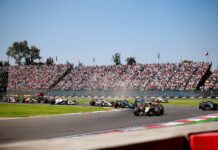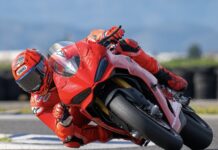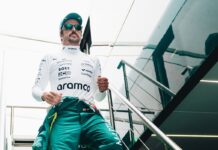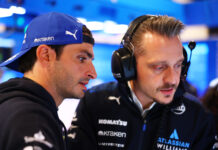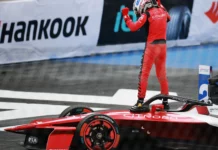Andrew Shovlin notes of initial findings of Mercedes regarding George Russell’s disqualification from F1 Belgian GP, as he adds on strategy as well.
The one thing that all F1 teams and drivers dread post-race is the technical checks and if the car is legal or not in racing conditions. Any small infraction can lead to disqualification which is what happened to Mercedes and Russell in Belgian GP.
One getting disqualified from a points finish is painful, but add a podium to that, it enhances the pain. The worst case is getting disqualified after winning a F1 race and Russell and Mercedes had to go through that pain after an excellent show at Spa.
Russell mastered the one-stop strategy to win while putting off Lewis Hamilton and Oscar Piastri behind. But all his work went in vain after his car didn’t fulfil the minimum weight criteria – falling short by 1.5 kg – which resulted in sure disqualification.
There was nothing that Mercedes could have done to prevent it apart from analysing what went wrong. The strategy and tyre wear was mooted as one of the reasons, but they are still to get into the details with the investigation on at Brackley.
Shovlin noted that both Russell and Hamilton started the race with no trouble per se but high tyre wear for the former caused a problem to him. He lost more material on the plank as they found out in the initial analysis, with more to continue on.
In addition to the weight, Shovlin explained the decision to switch to one-stop for Russell and why not for Hamilton, who was in the lead of the race at that time which played a crucial role. Naturally, the result was bittersweet despite Hamilton inheriting the win.
Issue with Russell’s car –
Shovlin: “It was obviously very disappointing and unfortunate, particularly after he had driven such a strong race to win from so far back. We are trying to understand exactly what happened. A lot of that involves us getting the weights of all the different components. The car can lose quite a lot of weight during the race. You get tyre wear, plank wear, brake wear, oil consumption. The driver themselves can lose a lot, and in this particular race George lost quite a bit of weight. The cars started the race the same weight. Lewis and George were both weighed after qualifying. The cars were within 500 grams. George’s car was the only one that had the problem, and it is because things like the tyre wear was much higher.
“It looks like we lost more material on the plank. We will collect all that data though, look at how we can refine our processes because clearly, we do not want that to happen in the future. In terms of pace at the start of the race it is nil because George’s car and Lewis’ car start the race at the same weight. Obviously, as George’s car was losing weight faster than Lewis’ throughout the race, there is an associated gain with that. But you are into the hundredths of a second per lap. It will be very small because when you are talking about amounts like one or two kilos, they do not amount to a lot of lap time. But as I said, at the start of the race the cars were the same weight.”
Strategy switch –
Shovlin: “It was a decision that was taken by the strategy team. In Lewis’ case, it was a fairly simple decision to make his pit stop because he was leading the race and he had Leclerc behind. Leclerc was not within undercut range, but when he stopped on fresh rubber, he would have undercut us if we had not brought Lewis in. When you are leading a race and the car in P2 stops, it is completely normal that you make sure you cover that because that is how you hold track position, and he was one of the significant threats. George did not have as much to lose. Had we stopped George at about that same point as we did Lewis, he was forecast to finish somewhere around fifth or sixth place.
“Maybe he would have got fourth, but we were expecting him to be able to get Sergio, but he was still in that same battle that he was in before with Max and Lando. If we stayed out longer, that was what would then put George in contention for a podium position. He was very helpfully telling us that the tyres had stabilised, they did not feel like they were dropping, and he asked if we felt a one-stop would be on the cards. Based on the wear we had seen in the earlier stops and in Lewis’ middle stint, we could see that it was viable that you would be able to get to the end of the race with rubber. He obviously did a great job hanging on to them. It was not our plan on Sunday morning to do that strategy, but it was a good reaction by the strategy team and by George himself during the race to adapt to what we were seeing, the lower degradation, and capitalise on that.”
Bittersweet scene –
Shovlin: “It was very much a bittersweet moment. It was a fantastic finish to the race. To get the cars home 1-2 was a real achievement, particularly because we had had such a difficult Friday. But overall, aside from the disappointment, the team is really encouraged by the performance. It was a great turnaround by the engineering team to get the car sorted out to perform so well in the race. It was also encouraging for us as hot circuits have not been our strength this year. The track was pretty hot there in Belgium and we were able to perform really well, particularly on the long run. George obviously did one of the longest stints of anyone. Plenty of positives for sure, and just a shame that we could not keep the result.”
Here’s Mercedes trio on Belgian GP
Here’s why George Russell was DQ’ed
Here’s link to a F1 Discord channel, join in to interact


